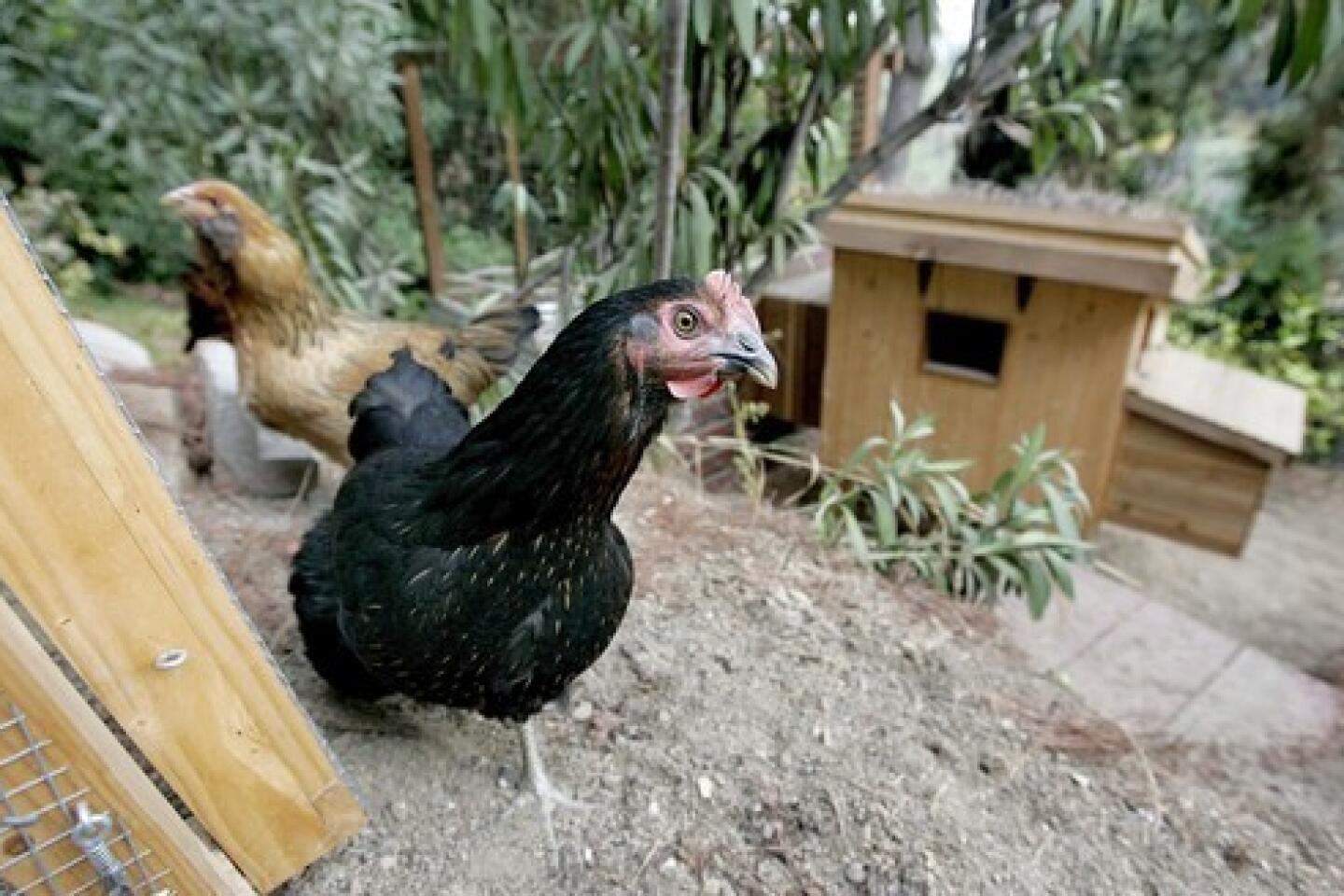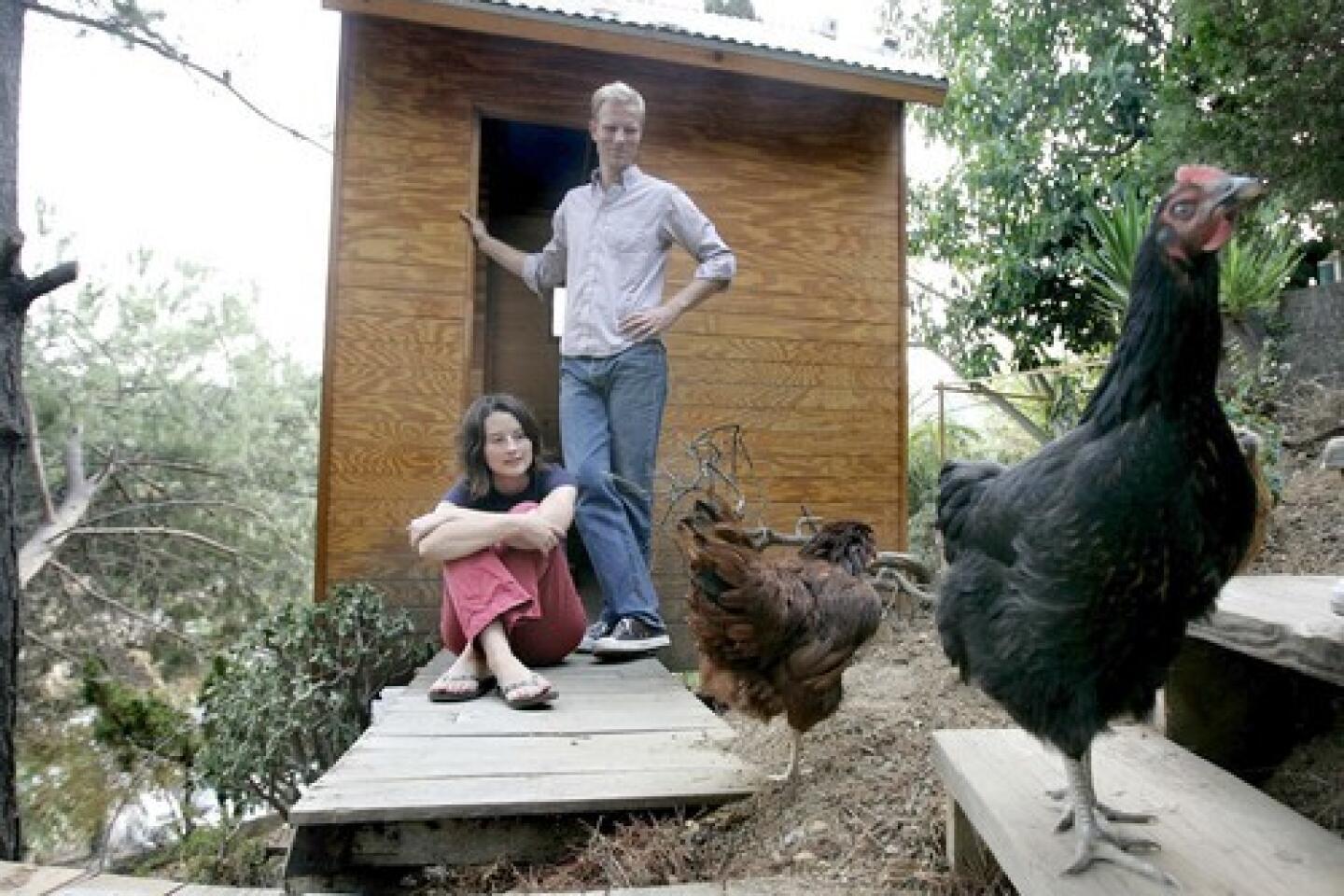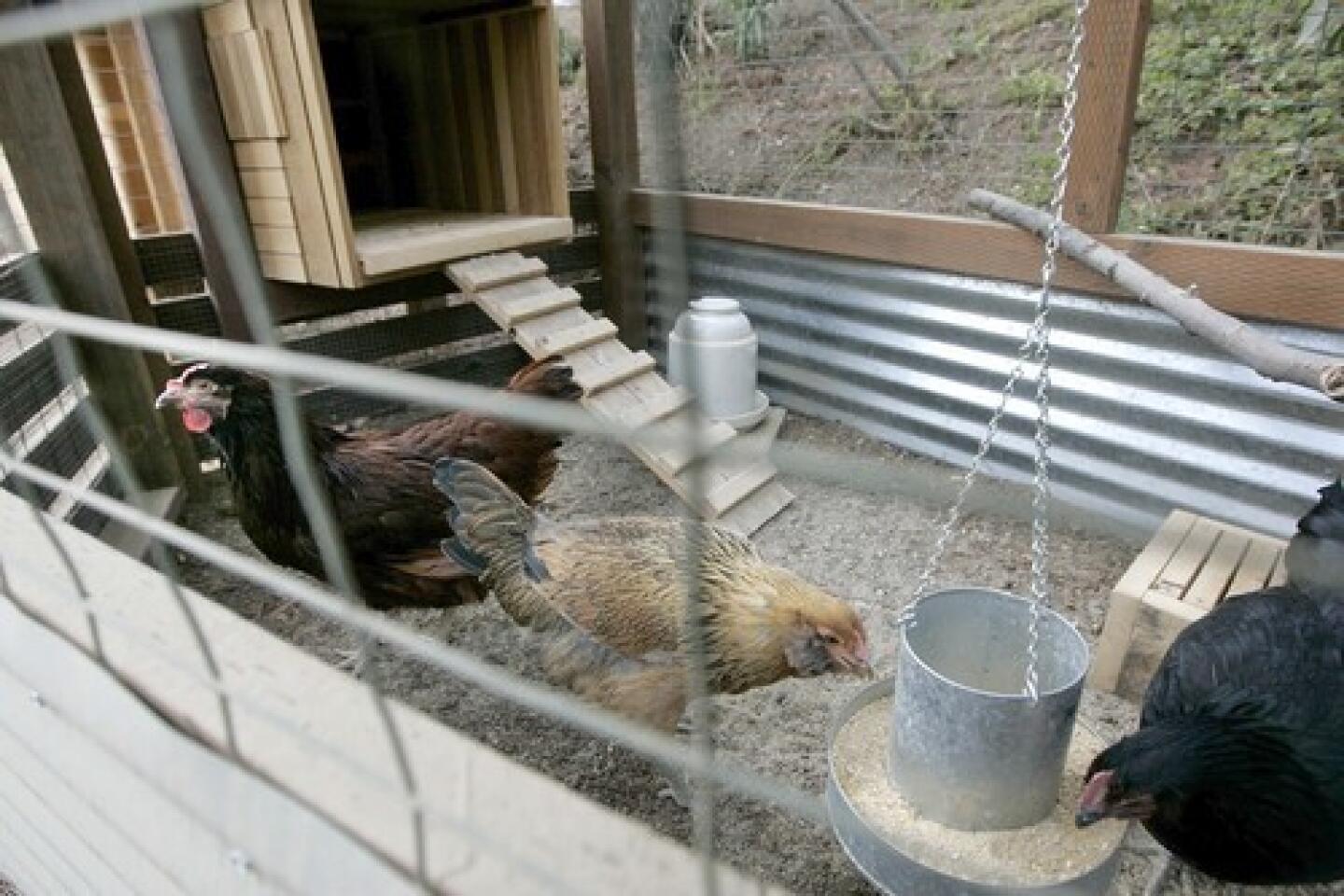Chickens as pets: City living with a farm feel
- Share via
Erik Knutzen and Kelly Coyne started keeping chickens in their Echo Park backyard a little more than a year ago. The two are co-authors of “The Urban Homestead,” a handbook for city dwellers who want to live off the land as much as possible, and the couple were interested in taking their urban farming experiments a step beyond harvesting artichokes, blueberries and zucchinis. So last summer they purchased four chicks, and now they are obsessed.
“I used to think it would be so great to bring the laptop outside and just watch the chickens and work,” Knutzen said. “But I can’t get anything done when I’m out here because I can’t take my eyes off the chickens. They are hypnotic.”
Any urban dweller interested in living green has good reason to keep chickens. They reduce garbage by eating your leftovers mixed in with their feed, and they will pick off those irritating caterpillars destroying the vegetable garden. Their poop is an excellent composting aid, and they will even trim your grass and weed for you, if you let them. Added benefits: farm-fresh eggs right from the backyard and the amusement of impressing friends with an interesting new pet -- and for many it is a pet, not a future entree.
“Bottom line, chickens are a lot of fun,” said Dave Belanger, publisher of Backyard Poultry magazine, who has seen subscriptions more than triple since he launched in 2006.
Because neither Knutzen nor Coyne had kept chickens before, their venture began with lots of research on message boards and websites. They learned that it’s best not to name the chickens and get emotionally attached (they did anyway), and that chickens are social animals, so it’s better to have more than one (they have four). Then there was the whole question of constructing a coop to ensure maximum chicken comfort and safety.
“I was talking to a friend of mine who used to be an architect who keeps a lot of chickens, and we think that architecture students should have to design chicken coops,” Knutzen said. “It’s the perfect way to practice how to meet a client’s specific needs.”
An infinite number of chicken coop plans are available in books and online, but most share the same concept of four zones: a run for the chickens to scratch and peck in the dirt, a place to eat and drink, a covered and secure roost in which to sleep at night, and, of course, the nesting box to lay their eggs.
In Mount Washington, furniture designer and artist Dakota Witzenburg built a chicken coop for his wife, Audrey Diehl, for Christmas last year as part of their ongoing effort to live green. When designing his coop, his priorities were keeping it easy to clean and making sure his chickens were safe by sinking corrugated metal at least 6 inches below ground so that burrowing predators couldn’t get in. But he also considered aesthetics.
His innovations included a green roof planted with succulents, and he’s considering a pulley system to make raising the roof easier. He chose yellow cedar and redwood planks not just for their sturdiness, but for the patina. “I didn’t want it to be something I had to maintain,” he said. “This will gray out nicely.”
Diehl has been keeping an elaborate blog on her chickens’ development and socialization at greenfrieda.blogspot.com.
“I’m kind of obsessed with them,” she said. “Chicken people always talk about how chickens are better than TV. You could watch them all day and never get tired of it.”
Oriana Bielawsky had her boyfriend, carpenter and doghouse designer Billy Peshel, build a midcentury modern coop to match their midcentury modern house (and their midcentury modern doghouse) in Laurel Canyon in fall 2004. Bielawsky didn’t even want a chicken, but Peshel found one wandering on Mulholland Drive one night as he was driving home, and nobody responded to their “Chicken Lost” signs, so they decided to keep her.
Even though Cecilia died this summer, her coop still stands, built on stilts to blend with the slope of the backyard. Bielawsky, who works in film production and considers herself more of an animal lover than a backyard farmer, said Cecilia became part of a family that included dogs, doves and cats. Plus, there were the eggs.
“Everyone loved them,” Bielawsky said, “and they were the most gorgeous sunset orange color.”
Netburn is a Times staff writer.
deborah.netburn@latimes. com
More to Read
Sign up for The Wild
We’ll help you find the best places to hike, bike and run, as well as the perfect silent spots for meditation and yoga.
You may occasionally receive promotional content from the Los Angeles Times.

















